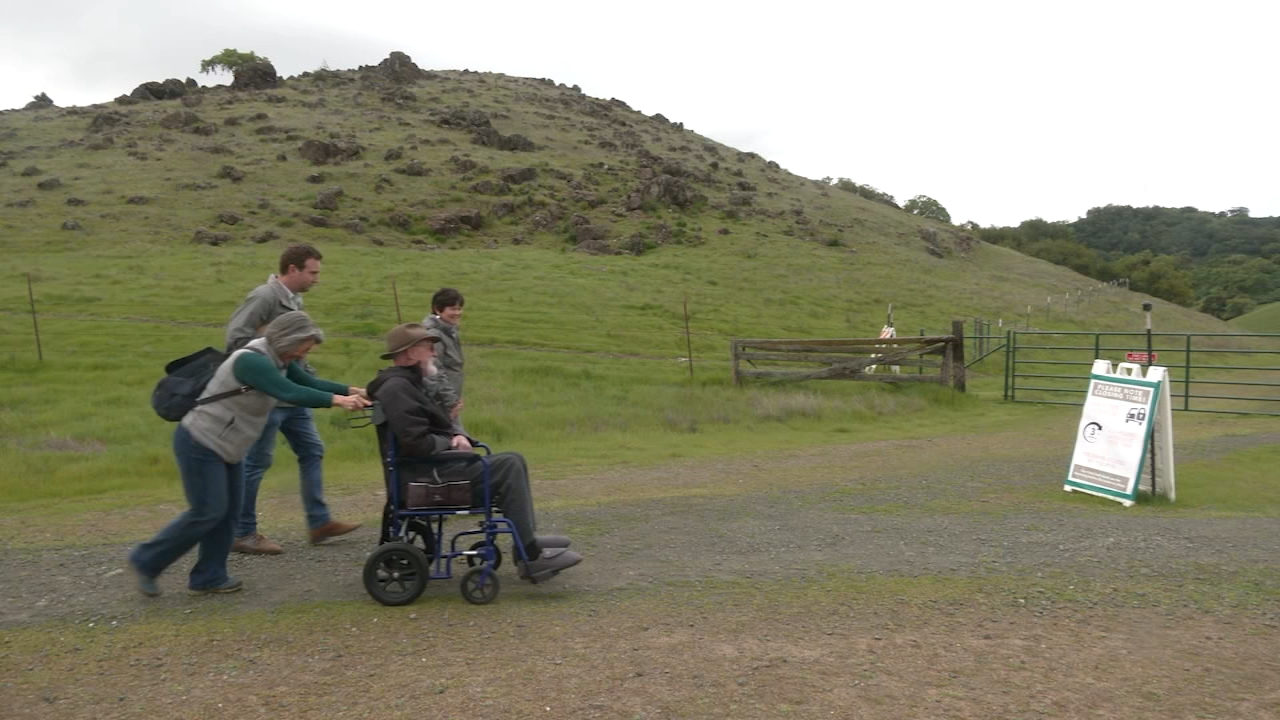Spaceship-sized detection system could help determine future of CA water supply, where to store it
The technology is able to penetrate the ground, yielding vital data on the geology of natural groundwater basins.
SAN FRANCISCO (KGO) -- If it looks like something that could transport you into the future, in a sense it is. A spaceship-sized hoop suspended from a helicopter is actually part of an advanced water detection system. The information it's gathering, could help determine the future of California's water supply - and where we store it.
RELATED: Carbon tracking system from California-based NASA lab could expand to space
"I've seen similar studies that say, 'Hey, let's not even think of building more above ground reservoirs. Let's use all the empty space below,'" says Rosemary Knight, Ph.D., a professor of Geophysics and senior fellow at the Woods Institute for the Environment at Stanford University.
For several years, Knight has been conducting aerial surveys using an electromagnetic sensing system. She says the technology is able to penetrate the ground, yielding vital data on the geology of natural groundwater basins. 3D maps pinpoint attractive sites, made up of materials marked in red, like sand and gravel, that allow water to sink in.
"Where if I put the water on the ground surface, hey, here's a connected pathway that will get me down to the water table, get this water down where it's going to be useful," Knight explains.
VIDEO: East Bay levee breached after 100-year closure in effort to restore rare wildlife to marshland

Felicia Marcus, a visiting fellow at the Woods Institute, sees the potential for an historic opportunity.
"Our groundwater basins are a gift. They're bigger than any above ground reservoir capacity," says Marcus.
While they're not visible like our above ground reservoirs, some studies estimate the state's groundwater basins can hold many times as much water when they're replenished. And with climate change, and extended droughts threatening to disrupt California's normal snowpack and river melt cycle, some believe they could be critical for capturing and keeping the water we do get. In fact, identifying and potentially maximizing the capacity of California's groundwater system is part of an aggressive statewide effort. Recent flights over the North Bay this past November are just the latest example.
STUDY: California's Sierra Nevada snowpack could vanish by 2046
Katherine Dlubac, Ph.D., directs the aerial survey program for the California Department of Water Resources. She says the data can help accelerate projects designed to recharge groundwater basins. Using technologies like direct underground pumping or creating saturation ponds.
"And so we can choose locations on the surface, where we know the top is connected to the aquifer. And we can sight our recharge pond there so that we can know and be sure that we're getting the groundwater into the aquifer where we want it to be," explains Dlubac.
While recharge efforts have been going on for years, experts say there's new momentum building since the passage of the of Sustainable Groundwater Management Act in 2014. The focus is on emerging strategies, like diverting floodwaters to farms or orchards, where the underground conditions are right for saturation -- Or, connecting dams and reservoirs to underground systems, to capture water from a heavy runoff that might otherwise need to be released.
WATCH: Is desalination the answer to California's drought? Here's what experts say

"Because we are seeing that that runoff curve is getting more extreme to where a lot of water shows up all at one time, as opposed to when it snows. And then the snow nicely releases that water steadily through the spring and summer. We are seeing more and more flashy discharge. And so a lot of these new concepts that people are working on at the local state and federal level, are really trying to put that water to most use, to best use," adds Steven Springhorn, technical manager for the Department of Water Resources' sustainable groundwater program.
It's a melding of Innovation and technology, and perhaps a second act, for a State built on major water projects launched more than a century ago, now facing the urgent challenges of climate change.
Multiple counties and water agencies are teaming up with the State on this project. The recent survey flights covered areas stretching from Ukiah, through Lake County and the Napa-Sonoma area.
To learn more, you can check out this page from Stanford University, or the Airborne Electromagnetic (AEM) Surveys page provided by the California Department of Water Resources.











